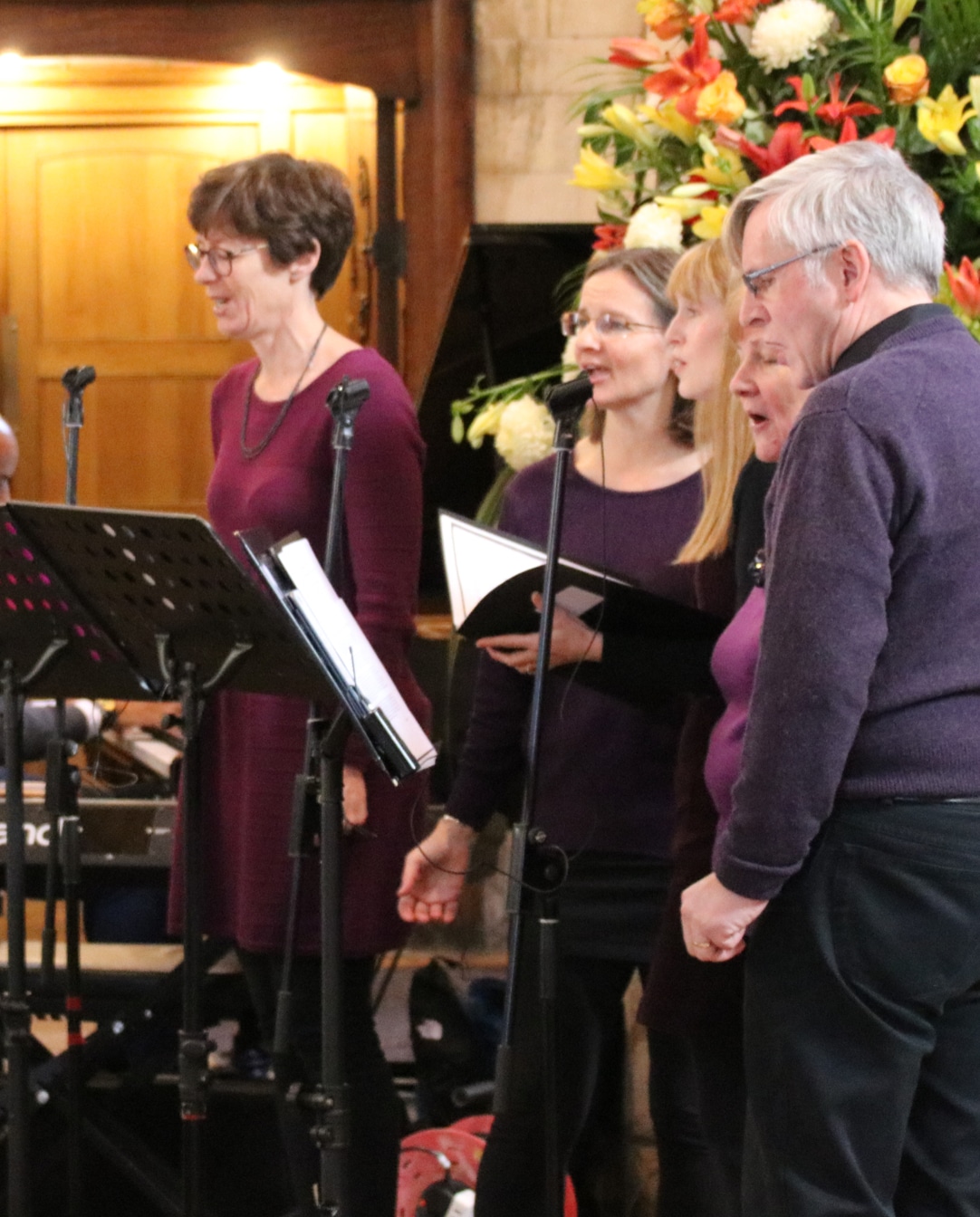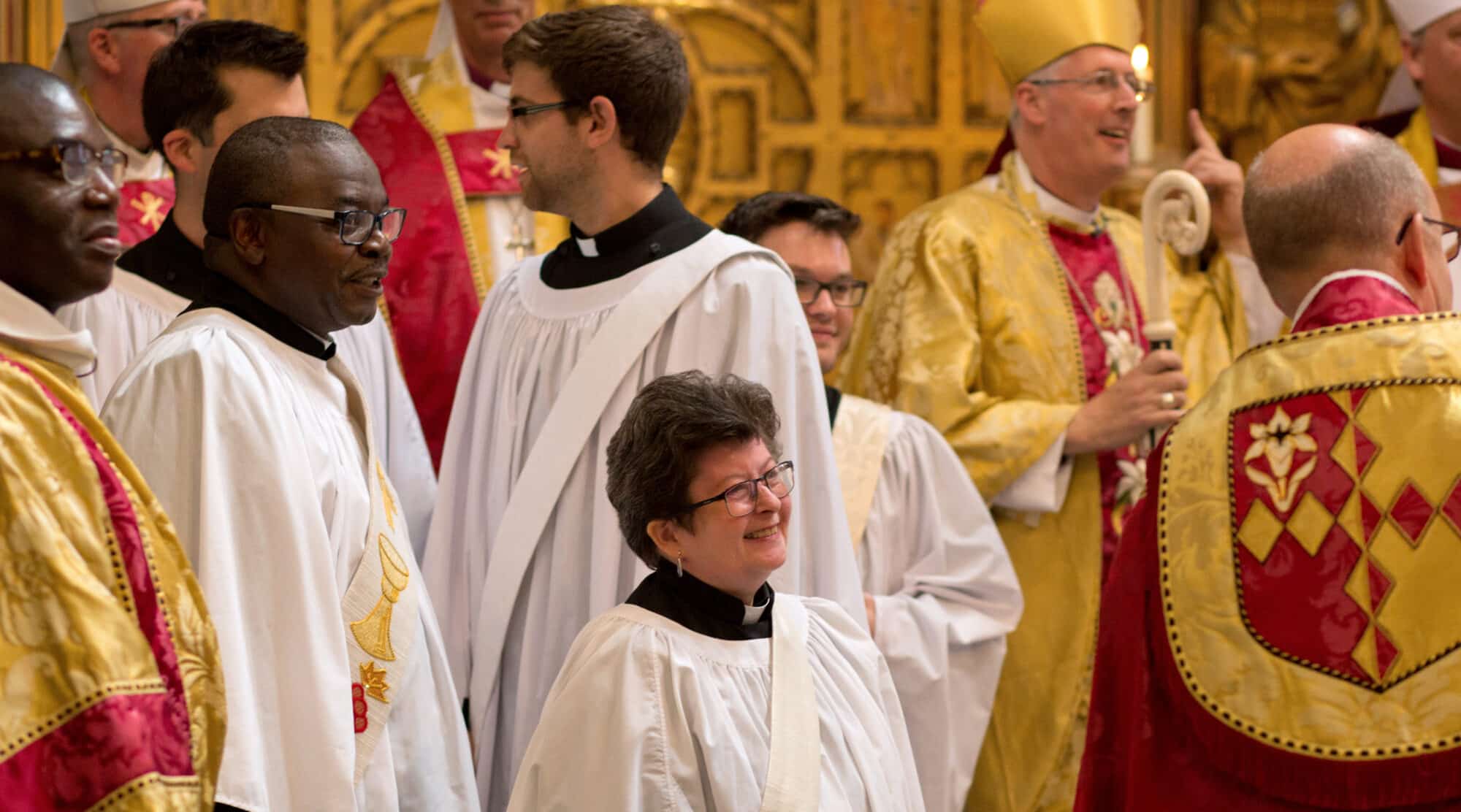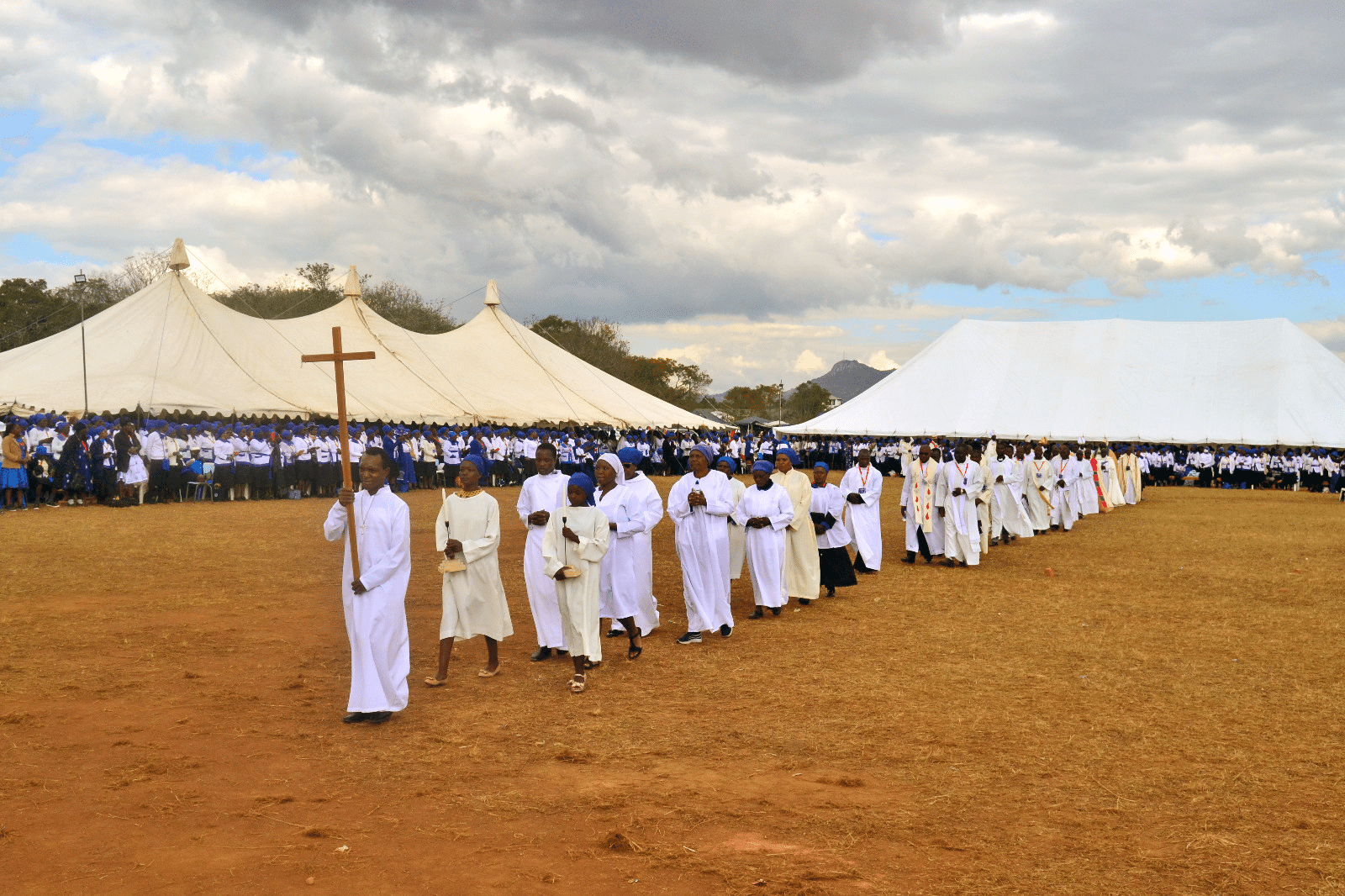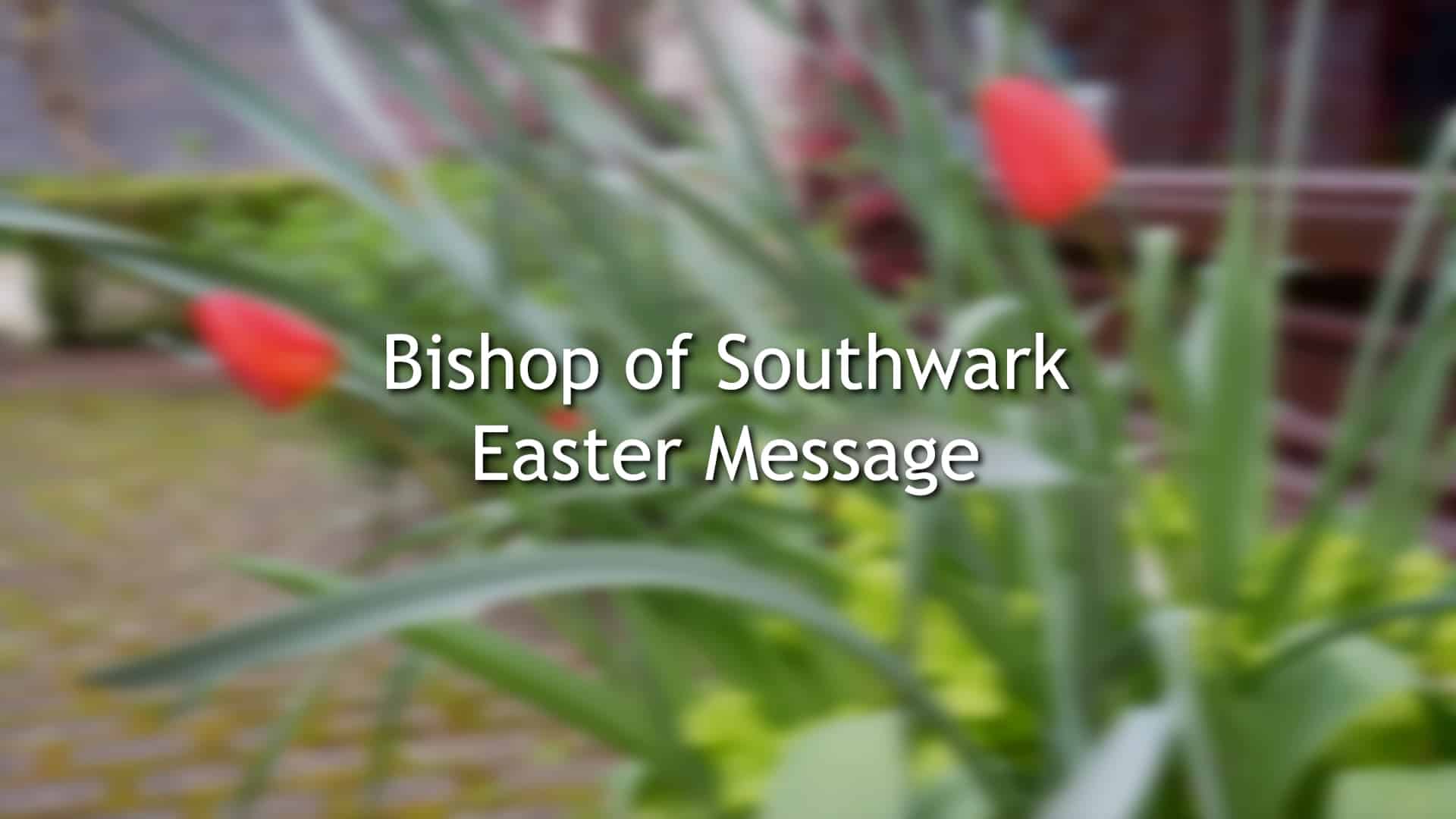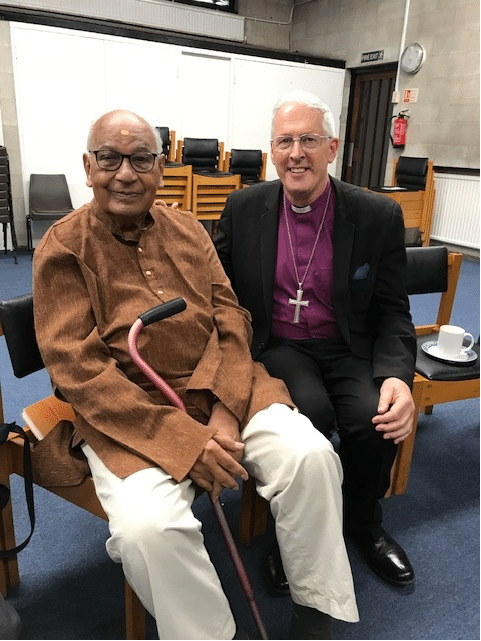Christ is Risen! Alleluia! What a joy it is to mark the conclusion of our Holy Week journey as we gather together here in the Cathedral and, still with a sense of deep unity, with those who are joining online. Our imaginations, emotions, and intellects have been enriched and challenged this week through the preaching and story-telling of Dr Paula Gooder, Canon Chancellor at St Paul’s Cathedral. Our prayer has been nurtured in the thoughtful and careful liturgy prepared by the Precentor, Canon Andrew Zihni, who with the support of wonderful music, and the back up of so many others have given us acts of worship that more than surmounted the challenges to our usual patterns during a pandemic. I express my deep gratitude to everyone who has made this week special: the Dean and Chapter, the musicians and serving team, the vergers, Mark Charlton and those who have made the broadcasts possible, and everyone else including many volunteers welcoming and assisting the congregations.
We might want to characterise Mary Magdalene’s journey that first Easter morning as a journey from absence, to presence, through a moment of recognition, to apostolic proclamation. The joy of the Resurrection broke upon her only as one wave of many, but it eventually carried her from the Garden where she was inconsolable in her grief, to proclaim to the disciples, ‘I have seen the Lord’. This is why Mary Magdalene has been given the great dignity of the title ‘Apostle to the Apostles’ by Pope Francis – fit was Mary who announced the Resurrection to those who had fled from the Cross in fear. She brought them the hope of what she had recognised.
It was Mary’s love for her Lord that brought her to his tomb early that morning, so she might care for him in his absence by anointing his body. But the wrenching, devastating loss of her Lord was compounded by the empty tomb which, rather than being a source of joy, was at first a source of confusion and overwhelming sorrow. She stood uncomprehendingly at the tomb, and wept. When eventually Mary finds the composure to look again into the tomb, the angels ask her why she weeps—‘Woman, why are you weeping?’—and her answer is that she weeps for Christ’s absence. Even in death, his body is precious and if the wound of his death was not sorrow enough, the pain of the missing body intensifies Mary’s suffering and grief.
When the risen Jesus makes himself present to Mary he asks her the same question the angels asked—‘Woman, why are you weeping?’—but then he adds ‘Whom are you are looking for?’ This second, simple question acknowledges Mary’s loss because it recognises that she seeks something. Christ’s physical presence to a loved one in pain is what makes healing and restoration possible – for true healing is not something that can be accomplished remotely or sympathetically, and God restores us to ourselves in the moment we begin to see our life bound with those around us. The possibility of healing comes through real, physical encounter; restoration, through the perception of our self in another.
Mary, of course, is too grief-stricken to see who is in front of her. It is love that blinds her, and we would be well if we had even half her love. ‘Sir, if you have carried him away, tell me where you have laid him, and I will take him away!’ The heart seeks the dignity of its beloved, the proper respect of the person even in death. Recognition comes like sun through the deluge of tears when she hears Jesus say her name. ‘Mary’. How can we imagine the tenderness and the love with which Jesus speaks her name? We cannot, I think, except by following Mary’s movement towards her teacher. She reaches out to Christ as if to confirm through touch what the senses of hearing and sight have now grasped. If we allow our hearts to follow that same movement toward Christ, we will learn that Jesus calls us each by our own name – and calls us with the tenderness of infinite love.
The thread which links these three elements of Mary’s journey into the joy of the Resurrection: absence, presence, and recognition, is, of course, the body of Christ. Mary’s story only makes sense, it only coheres and carries truth, if there is continuity between Christ’s body before his death and Christ’s body after the Resurrection. Do not be lulled into thinking that the Resurrection body was substantially different after, or because of, death. It must be the same body in order for Christ to be the same person. This is why the wounds that Christ bore remain after the Resurrection. They are the guarantee that when death is brought into contact with God’s life, it is death that is vanquished.
If we remember Christ’s wounds – his transfigured, beautiful wounds – we shall journey deeper in our understanding of the Resurrection and move more profoundly into joy. We shall come to know that the Resurrection never loses sight of human need, that the Christian faith is not a spiritual escape or abstraction from the body. Think, for example, of all the Resurrection encounters. The Risen Jesus meets those who love him at the point of their need every time. Mary, in her tears. The two disciples on the road to Emmaus, in their abandonment. The disciples in the locked room, in their fear and terror. On the shore of the Sea of Galilee, Jesus meets Simon Peter and his friends in their tiredness, frustration and hunger, cooking for them as an act of love. And, still, on the shore, he meets Simon Peter in his embarrassment and foolishness and regret, restoring him by grace and charging him to ‘feed my sheep’.
Mary Magdalene, too, received an apostolic charge once she recognised the Risen Christ and moved towards him. For Christ gave her the responsibility to proclaim what she saw. In the same way, the joy of Easter cannot be kept to ourselves. We who have encountered Christ, who recognise him in the Bread and the Wine, in our sisters and brothers as much as in strangers, we have this apostolic responsibility, too. Just as the continuity in Christ’s body before and after death is signified to all by his wounds so we enter the joy of the Resurrection with our wounds and care for others in Christ’s name. With his wounds Christ meets those he loves at the point of their need. Let us do likewise.
We have endured much in this year of pandemic. Many have wounds. Many endure the disorientation and the wrenching, terrible loss of grief, just as Mary did. But our hope is in Christ. It is Christ alone who will restore us to fullness of life. It is Christ alone who guarantees our continuity before, through and after this year. For the Christian hope is a true hope that does not – indeed it cannot – disappoint us because Christ rose bodily from the tomb. In him we see wounds transfigured, and receive assurance that once our humanity has encountered God’s love, we too can live in the joy of Christ’s Risen life. So, my friends, go from here into the world God has given you to love, to enjoy, and to serve. Recognise the charge given you through Mary, Apostle to the Apostles; and tell everyone you know, ‘I have seen Lord’. For Christ is Risen! He is Risen indeed—alleluia!
Watch Easter Eucharist at Southwark Cathedral here:
